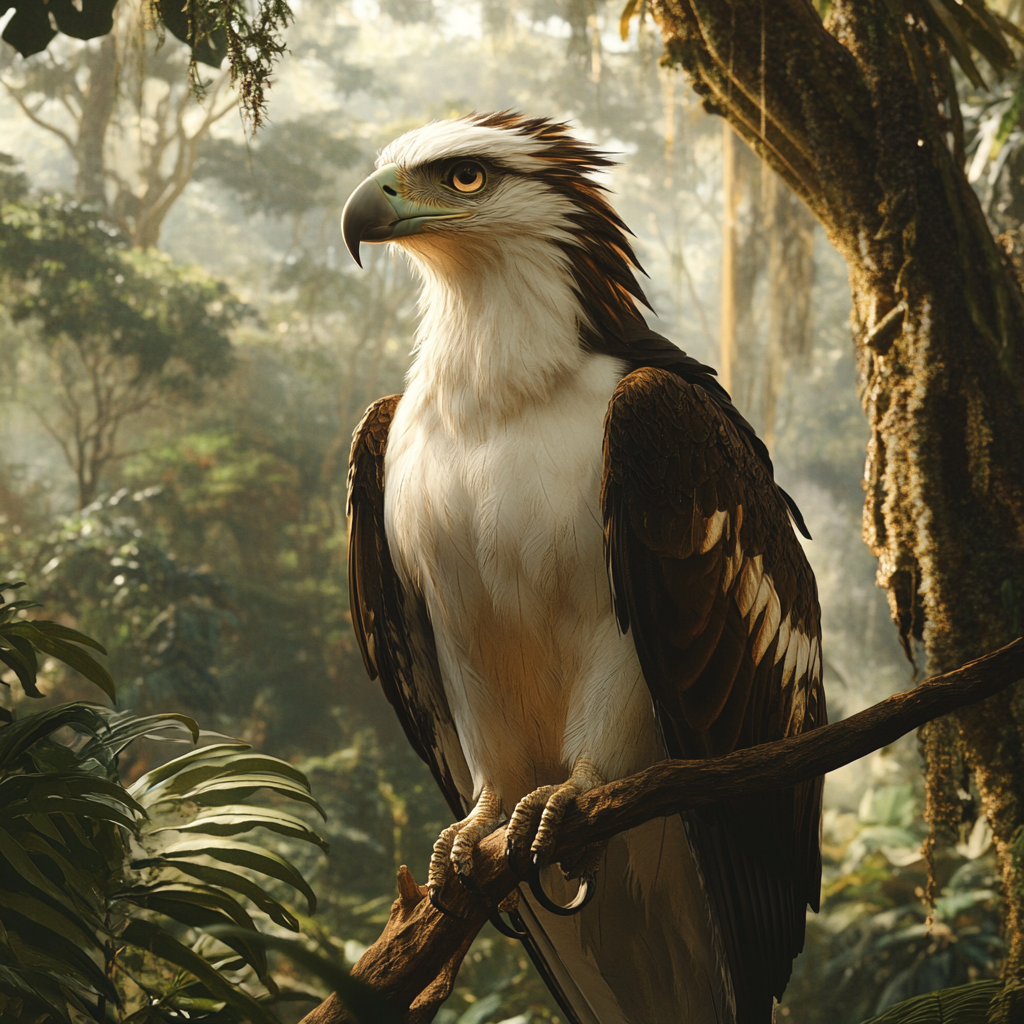
The first time I saw a Philippine eagle, I understood why locals call it “Haribon” – the king of birds. Perched majestically in the canopy of an ancient dipterocarp tree, its distinctive crest of feathers bristling like a royal crown, the bird commanded attention with an almost mystical presence.
This magnificent raptor, scientifically known as Pithecophaga jefferyi, holds several impressive records. With a wingspan reaching up to 7.3 feet (2.2 meters), it ranks among the world’s largest eagles. But perhaps what’s most fascinating is how this apex predator got its popular nickname – the Monkey-eating Eagle – and why that name doesn’t tell the whole story.
Beyond the Monkey-eating Myth
Early naturalists who first documented these birds catching monkeys jumped to conclusions about their dietary preferences. While it’s true that Philippine eagles do hunt monkeys, modern research reveals them to be versatile hunters with a far more varied menu. From palm civets and flying lemurs to snakes, monitor lizards, and even the occasional wild pig, these adaptable predators will take whatever prey their forest kingdom provides.
A Family Life Worthy of Royalty
What truly sets these eagles apart is their remarkable family dynamics. They’re not just powerful hunters; they’re devoted partners and parents. Philippine eagles mate for life, and their commitment to raising offspring is extraordinary. Each pair produces just one egg every two years – a surprisingly conservative reproductive strategy for such a large bird.
Their parenting skills are equally impressive. Both parents participate in nest-building, choosing the tallest trees in their territory for their eyrie. They’ll spend months teaching their single chick the intricate skills needed for survival, including hunting techniques that involve bringing live prey to the nest for practice sessions.
Fighting for Survival
Despite their power and adaptability, these magnificent birds face a precarious future. Current estimates suggest only about 400 breeding pairs remain in the wild – a stark reminder of how human activities threaten even the mightiest of nature’s creatures. The primary culprit? Deforestation of their native Philippine rainforests, which destroys both their hunting grounds and nesting sites.
Conservation efforts are ongoing, spearheaded by organizations like the Philippine Eagle Foundation. Their work includes captive breeding programs, habitat protection, and public education initiatives. These efforts have seen some success, but the battle to save this species is far from over.
More Than Just a Bird
In the Philippines, the eagle has become more than just a rare bird – it’s a national symbol, appearing on everything from coins to government seals. Its image represents both the natural heritage of the Philippines and the ongoing struggle to balance development with conservation.
Looking into the fierce golden eyes of a Philippine eagle, one sees something beyond mere animal survival. There’s an intelligence there, a dignity that reminds us of our responsibility to protect these magnificent creatures. As human development continues to encroach on their domain, the future of these forest monarchs hangs in the balance.
The Philippine eagle’s story isn’t just about a remarkable bird; it’s about our relationship with the natural world and the choices we make that affect its survival. As we work to protect these magnificent raptors, we’re really protecting something larger – the idea that there’s still room in our world for creatures that remind us of nature’s power, beauty, and mystery.
For now, these royal raptors still soar above the remaining rainforests of the Philippines, their presence a testament to both nature’s resilience and its vulnerability. Their continued survival will depend on our commitment to preserving not just the birds themselves, but the entire ecosystem they depend upon.








Thank you for your sharing. I am worried that I lack creative ideas. It is your article that makes me full of hope. Thank you. But, I have a question, can you help me? https://www.binance.info/en-NG/register-person?ref=JHQQKNKN
Thank you for your sharing. I am worried that I lack creative ideas. It is your article that makes me full of hope. Thank you. But, I have a question, can you help me?
Your point of view caught my eye and was very interesting. Thanks. I have a question for you.